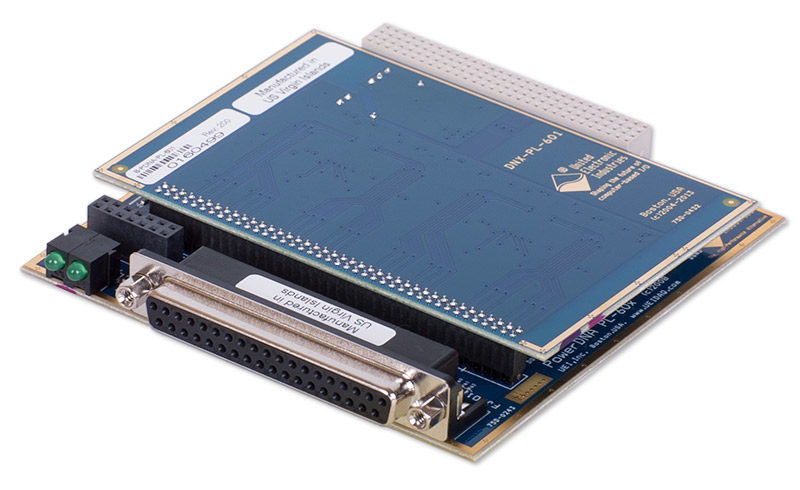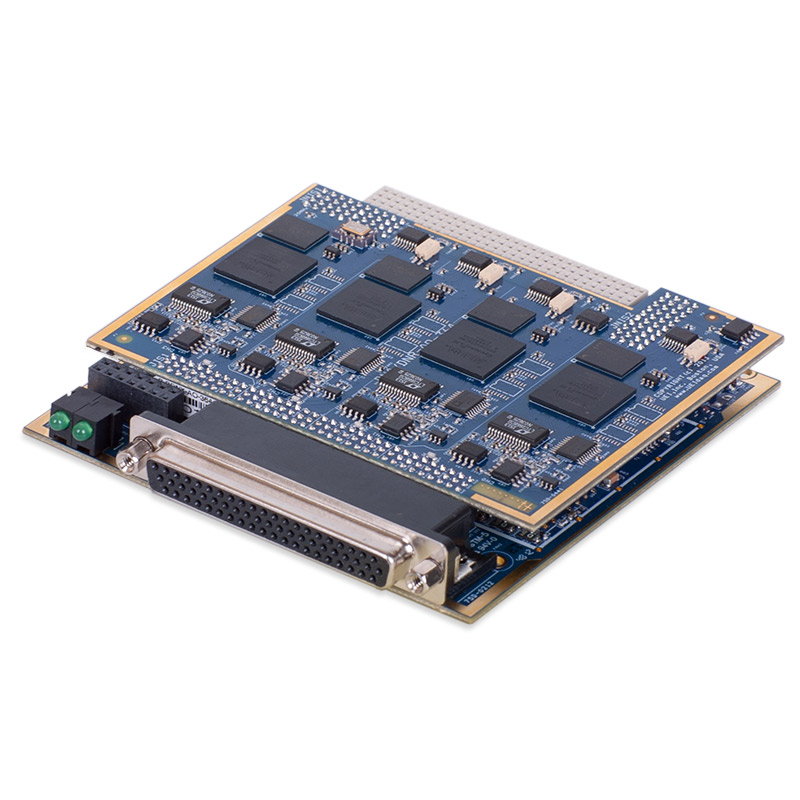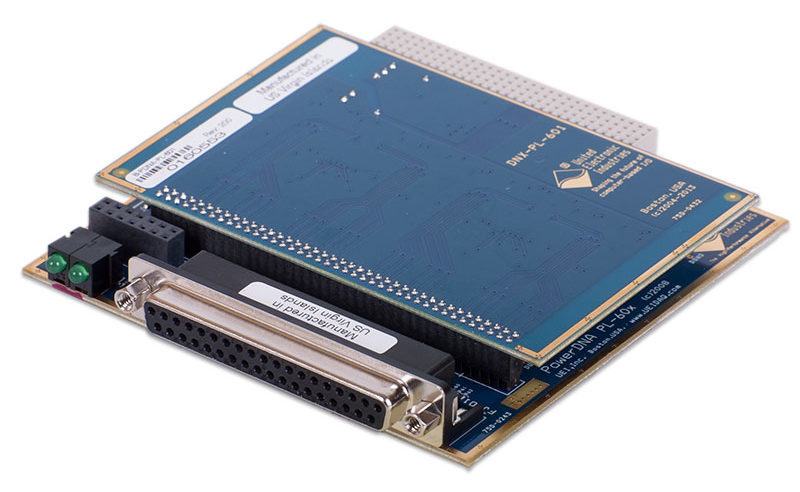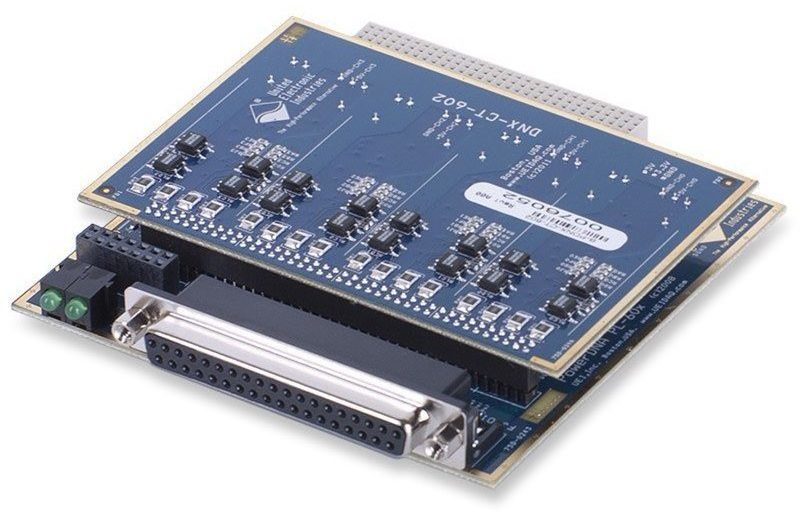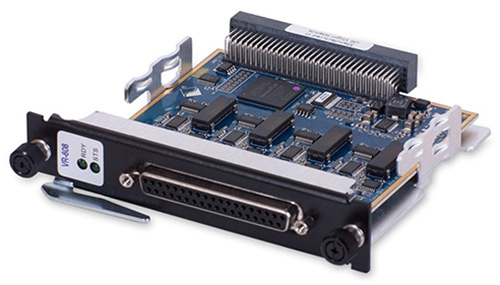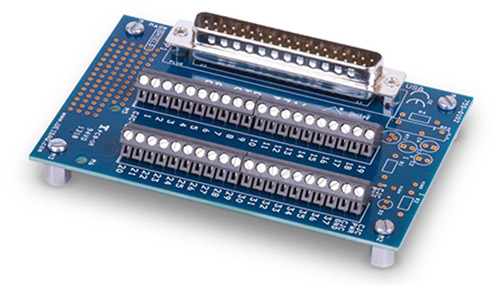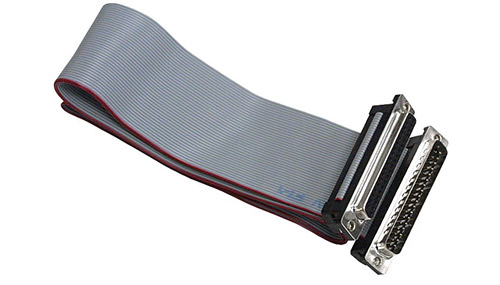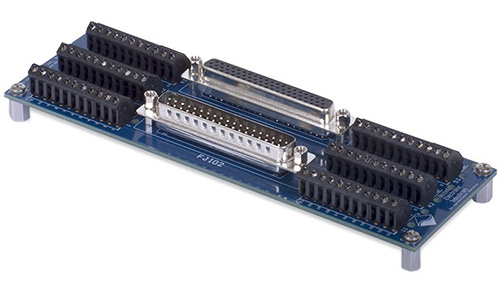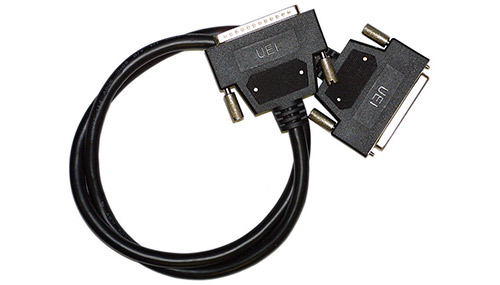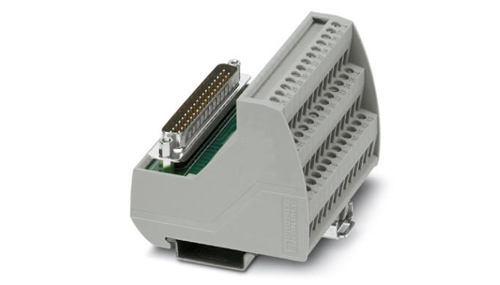The DNA/DNR/DNF-VR-608 are 8-channel, variable reluctance sensor interface boards designed for use in UEI’s Cube, RACKtangle and FlatRACK chassis respectively. Electronically, they are identical. The boards are designed for use in a wide variety of motion and rotation monitoring applications. Each channel provides a fully differential input and is capable of monitoring VR output levels as high as 250 V peak-to-peak. The board is also an ideal choice as a general counter unrelated to variable reluctance sensors, including hall effect sensors, as it can be used to measure an extremely wide variety of AC signals.
The DNx-VR-608 offers a maximum input pulse rate of 300 kHz. The maximum input pulse rate is somewhat dependent on the signal level. The detailed specs to the right show pulse rates obtainable at different input signal levels. The minimum detectable input signal may be fixed at 50 mVp-p or may be set to “Adaptive Peak Threshold” mode where the threshold is set at approximately 30% of a time averaged input. A watchdog circuit resets the input to minimum threshold level if the input “drops out” for 85 mS. Open sensor/disconnected cable detection is also provided on the VR-608 board.
The board can detect and differentiate between open sensors and stalled rotation. Douts can be set to change if an open sensor is detected and/or rotation has stopped. The Douts can also be used as an overspeed alarm. The board is also can be used in torque measurement systems that utilize two VR sensors and determine torque by comparing the timing of the pulses from each sensor.
The VR-608 provides a unique and powerful signal conditioner mode where the VR/Hall inputs are conditioned and made available as a TTL compatible digital outputs. The board supports a matrix configuration where any input can be directed to any or all of the digital outputs. For applications where the VR-608 is primarily used as a signal conditioner, the input to Dout mapping can be set to start running at power up, even if the host Cube or RACK is not running any applications software.
The DNx-VR-608 supports the following operating modes:
- Timed Count/Frequency: Counts the number of teeth detected during a specified time interval and returns the velocity in RPM.
- N pulses: Measure the time taken to detect N teeth and returns velocity in RPM
- Z/Index pulse: Measures the number of teeth and the time elapsed between two Z/Index pulses. The Z/Index tooth is usually a gap or a double tooth on the encoder wheel. The max input frequency is approximately 50 kHz in the double tooth mode.
- Inter-tooth time: For those looking to measure at very low rates and/or to track acceleration between teeth, a powerful inter-tooth timing function is available. This function measures the time differential between teeth with a resolution of 15.2 nS at a counter depth of 32 bits. Each measurement is stored in a FIFO, so acceleration profiles over the entire input operating range can be acquired for indefinite periods.
The input impedance of each channel is greater than 40 kΩ with less than 250 pF of capacitance. This high impedance ensures the board is compatible with an extremely wide range of variable reluctance sensors.
The DNx-VR-608 is fully isolated from the UEI chassis as well as other I/O boards installed in the chassis. The inputs are divided into four channel pairs, and each two-channel pair is isolated from the others. Each isolated channel pair is also supported with a logic level digital output.
All connections are made through 37-pin D connectors that ensure that mating cables or connectors are readily available. Users may also use the DNA-STP-37 screw terminal panel via DNA-CBL-37 series cables.
Software is included, providing a comprehensive, yet easy-to-use API that supports all popular operating systems, including Windows, Linux, and most real-time operating systems—such as QNX, Intime, VXworks, and more. Additionally, the UEIDAQ Framework—an even higher level Windows driver—supplies complete support for those creating applications in all popular Windows programming languages, as well as data acquisition software packages such as LabVIEW and MATLAB/Simulink.
The latest revision of DNx-VR-608 adds a series of enhancements. Two additional counting modes were implemented, allowing rotation to be measured in different ways. VR-608 now has 4 digital TTL inputs and a FIR filter which is helpful for noise reduction in ANALOG signals over 10k. In terms of digital output sourcing, as well as DOut tooth pulse routing, pulses can now be routed from digital input, end of measurement period, and alarm triggering. The VR-608 board also has the capability to simulate digital VR signals via the DOuts. Additional internal alarms were incorporated as well to monitor stall, overspeed, and open connections.
